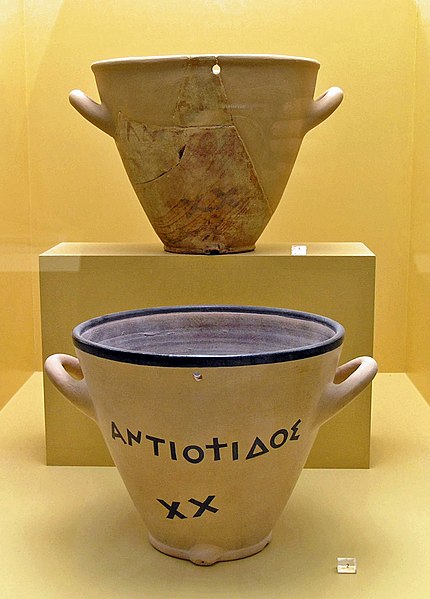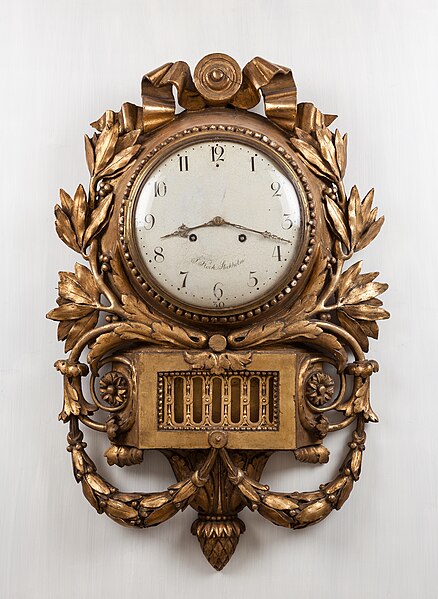A water clock or clepsydra is a timepiece by which time is measured by the regulated flow of liquid into or out from a vessel, and where the amount of liquid can then be measured.
Water clock calculations by Nabû-apla-iddina.
A display of two outflow water clocks from the Ancient Agora Museum in Athens. The top is an original from the late 5th century BC. The bottom is a reconstruction of a clay original.
Eschinardi's water clock (Reproduced from Francesco Eschinardi, Appendix Ad Exodium de Tympano)
The water-powered mechanism of Su Song's astronomical clock tower, featuring a clepsydra tank, waterwheel, escapement mechanism, and chain drive to power an armillary sphere and 113 striking clock jacks to sound the hours and to display informative plaques
A clock or chronometer is a device that measures and displays time. The clock is one of the oldest human inventions, meeting the need to measure intervals of time shorter than the natural units such as the day, the lunar month, and the year. Devices operating on several physical processes have been used over the millennia.
An analog pendulum clock made around 18th century
Casio F-91W digital watch, one of the most popular watches ever
Simple horizontal sundial
The flow of sand in an hourglass can be used to keep track of elapsed time.








